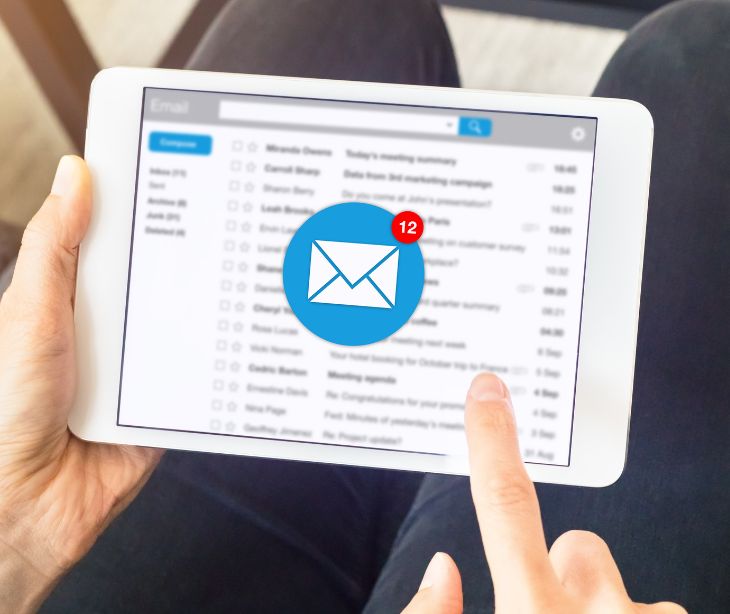3 min read
How therapists can use email to keep patients on track during therapy
Kapua Iao
March 27, 2023

HIPAA compliant email can be a powerful messaging tool used by therapists to keep patients on track during treatment. And many practitioners want to incorporate email communication into their treatment plans but are concerned about HIPAA violations.
As we know, a single HIPAA breach can result in a huge fine, disrupted service, and angry/distrustful patients. But safe email communication is possible as long as therapists understand the rules and regulations that form HIPAA. And as long as therapists utilize a solid mix of cyber tools to protect patients and protected health information (PHI).
When done correctly, email is an efficient and convenient way for therapists and patients to communicate during treatment. So how can therapists use email safely to keep patients on track?
So is email HIPAA compliant for therapists?
There are still many questions regarding the use of email by healthcare providers. But in a nutshell, email can be HIPAA compliant for therapists when proper cybersecurity measures are in place.
The HIPAA Act includes two main rules: the Privacy Rule and the Security Rule. The Privacy Rule establishes national standards for using and disclosing PHI, while the Security Rule sets the safeguards needed to protect ePHI (electronic PHI). The Security Rule specifies administrative, physical, and technical safeguards necessary for compliance.
Knowing what constitutes PHI can be tricky. Healthcare providers may never know what and how they expose patients’ data. For example, sending a therapy patient a follow-up email with articles to read can identify them as having a condition for which they are seeking treatment. In other words, something that may seem benign when first sent may, in fact, be a HIPAA violation.
That is why it is always important to use HIPAA compliant email securely and appropriately.
Actions to guarantee therapists and patients use HIPAA compliant email
HIPAA does not prohibit sending ePHI in an email. Instead, it provides the means to ensure email is HIPAA compliant. The HIPAA guidelines include several actions that can make email communication safe for therapists to use during treatment.
1. Find an email platform that offers HIPAA compliant email, like Paubox Email Suite.
2. Ask the email platform to sign a business associate agreement and confirm knowledge of utilized security measures.
3. Check that required physical, technical, and administrative HIPAA compliant safeguards are in place, including:
- Policies and procedures for proper email use
- Access controls (e.g., multi-factor authentication)
- Offline backup
4. Ensure addressable HIPAA protections are used or, if not used, are properly notated; the most known for email is encryption (i.e., at rest and in transit), which is essentially required.
5. Train staff on proper HIPAA compliant email use, such as spotting a phishing or spoofing scheme.
HIPAA compliant email protects PHI during therapists’ communications with patients, letting them focus on treatment versus HIPAA violations.
Related: How to send HIPAA compliant emails
HIPAA compliant email: a therapist’s tool for treatment
Email is convenient and effective for therapists who want to directly engage with patients. Here are the top four ways therapists can use email to ensure patients stay on track during treatment.
Check-in and monitor
Brief check-ins help therapists monitor a patient during treatment and strengthen their relationship. Such emails can help a therapist review and adjust a patient’s goals and reassure the patient about the why of treatment.
Moreover, they can address any questions or concerns as well as clear up any confusion.
Share resources, therapy homework
By sharing resources, tools, and community references, therapists can help patients stay on route to reach their objectives. Furthermore, patients can use email to electronically turn in any treatment homework and discuss the finished exercises carefully.
Book an irregular appointment
Regular email check-in can help therapists understand if it is necessary to book an unscheduled appointment. By paying attention to email content, therapists demonstrate how they can further provide a safe environment for patients, even electronically.
Send HIPAA compliant newsletters
Therapists can send targeted, helpful, and relevant contact to patients through regular HIPAA compliant newsletters. With these newsletters, they could inspire patients to improve their health with shared success stories. Or provide tools (e.g., meditation apps) to help focus patients on treatment.
Therapists can and should create a good experience for their patients
The bottom line is that there is a lot to HIPAA compliance, and the stakes are high if an error is made. Nevertheless, reading through the HIPAA guidelines and figuring out the best mix of tools provides an incredible method of communication. Therapists can use said communication to maintain contact, foster trust, and encourage patients to stay on track during treatment.
Therapists can (and should) use email to create a safe and seamless experience. One that encourages patients to adhere to their discussed plans and explore effective recovery methods. With solid HIPAA compliant email communication, therapists are able to create a foundation for providing positive growth and change.
Subscribe to Paubox Weekly
Every Friday we'll bring you the most important news from Paubox. Our aim is to make you smarter, faster.





